#ottomans
Photo

How to Create the Serenity of a Cozy Neutral Living Room
#living rooms#seating areas#cozy aesthetic#English country#interior decorating#sofas#couches#ottomans#accent tables
525 notes
·
View notes
Text
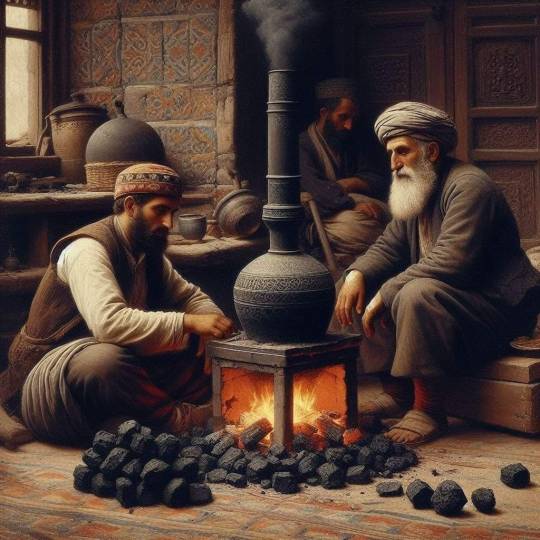
Sobanın çok sonraları geldiği Osmanlıda evler, oda içinde taşınan mangallarla ısıtılırdı. İhtiyaç halinde ateş ve köz temini için komşuya gidilir ve ateşin sönmemesi için ayaküstü hal hatır sorulup dönülürdü.
İşte aceleciler için buradan çıkan bir deyim: "Ateş almaya mı geldin?"
Evlerde mangal yakmak mühim bir mesele idi. Çünkü odun kömürü de diğer kömürler gibi yanarken zehirli bir madde olan karbondioksit gazı çıkardığından ev içinde kapalı yerde mangal yakılamazdı. Bunun için mangallar ya mutfakta ocağın içinde, ya dışarıda bir yerde evin terasında yakılırdı.
Mangal, yani mangalda kömür yakmak için de yelpazelemek, yahut kırk santim boyunda mahruli sekilde üstü dar, altı daha geniş mangal boruları kullanmak icap ederdi. O devirde mangal kömürü yanarken zehirlenip bir gün mütemadiyen başı ağrıyan vatandaşların sayısı hesapsızdı.
في الإمبراطورية العثمانية، حيث ظهرت المواقد في وقت لاحق، تم تدفئة المنازل بواسطة حفلات الشواء التي يتم حملها داخل الغرفة. وفي حالة الحاجة، كان يذهب إلى جاره ليحضر نارًا وجمرًا، ثم يعود بعد أن يسأل عن أحوالهم، حتى لا تنطفئ النار.
وهنا تعبير للمستعجلين: "هل جئت لتأخذ النار؟"
كانت إضاءة الشواية في المنزل مسألة مهمة. لأن الفحم، مثل أنواع الفحم الأخرى، يطلق غاز ثاني أكسيد الكربون، وهو مادة سامة، عند حرقه، لا يمكن إشعال حفلات الشواء في الداخل. لهذا السبب، تم إشعال حفلات الشواء إما في موقد المطبخ أو في الخارج على شرفة المنزل.
من أجل حرق الفحم في الشواية، كان من الضروري تهوية أو استخدام أنابيب الشواء التي يبلغ طولها أربعين سنتيمترا، ضيقة من الأعلى وأوسع من الأسفل. وفي تلك الفترة، كان عدد المواطنين الذين أصيبوا بالتسمم أثناء حرق الفحم ويعانون من الصداع المستمر لمدة يوم لا يحصى.
In the Ottoman Empire, where stoves came much later, houses were heated with barbecues carried inside the room. In case of need, one would go to a neighbor to get fire and embers, and then return after asking how they were doing, so that the fire would not go out.
Here is an expression for those in a hurry: "Did you come to take fire?"
Lighting a barbecue at home was an important issue. Because charcoal, like other coals, releases carbon dioxide gas, a poisonous substance, when burning, barbecues could not be lit indoors. For this reason, barbecues were lit either in the kitchen stove or outside on the terrace of the house.
In order to burn coal in a barbecue, it was necessary to fan or use barbecue pipes that were forty centimeters long, narrow at the top and wider at the bottom. In that period, the number of citizens who were poisoned while burning charcoal and suffered from constant headaches for a day was countless.
#türkiye#doğa#travel photography#travel destinations#travel#manzara#view#natural#europe#africa#ottomans#ottoman#osmanlı imparatorluğu#Spotify
70 notes
·
View notes
Text

“Take my shirt and lay it over my father's face: he will recover his sight. Then bring your whole family back to me.”
Surah Yusuf verse 93.
In different eras and places among Muslims talismanic shirts were worn under the regular robes of people to offer protection from Nazar and Sihr. It is believed that this tradition dates back to the prophet Yusuf (Joseph). One of the more famous practitioners of this tradition are the Ottomans, sultans such as Cem Sultan and Süleyman-ı Evvel wore them. This Quran verse is what inspired this.
#books#history#literature#religion#theology#mysticism#esotericism#religious#orthodox#sufi#Sufism#ottomans#ottoman history#islam#islamic history#islamic theology#islamic tradition#traditionalism#traditional#sunni muslim#shia muslim#Muslims#shia#Sunni#haqq#hanafi#ahlulbayt#Middle East#orient#oriental art
68 notes
·
View notes
Text

Battle of the Pyramids by Wojciech Kossak
#wojciech kossak#art#battle of the pyramids#egypt#napoléon#napoleon#bonaparte#napoleon bonaparte#france#french#ottoman empire#ottomans#mamluks#history#napoléon bonaparte#mamluk#ottoman#french republic#french revolutionary wars#egyptian#cavalry#egyptian campaign#napoleonic#europe#european#pyramids
51 notes
·
View notes
Text
Calabrian Proverb: "simu cumbinati comu i santi 'i Rriggiu" (in Calabrian dialect)
Siamo ridotti come i santi reggini. (in Italian)
We’ve been reduced to such a state, like the saints in Reggio. (in English)
This proverb refers to the historical vandalism committed by Ottoman Turks and Barbary pirates, who defaced religious paintings and chopped the heads off of and otherwise damaged sculptures in Reggio Calabria, Italy.

At the San Paolo Museum, in Reggio Calabria, amongst the many paintings, San Michele che uccide il drago (St. Michael Killing the Dragon), a large image on a wooden panel stands out for both the beauty of the work and its history. Dating from 1470, this painting of Saint Michael the Archangel was for many years attributed to Antonello da Messina. For this reason, the piece was analyzed in great detail. Even though it was determined not to be of the hand of the renowned artist, which is of no great surprise, the physical state of the image was studied more than perhaps it otherwise would have been.
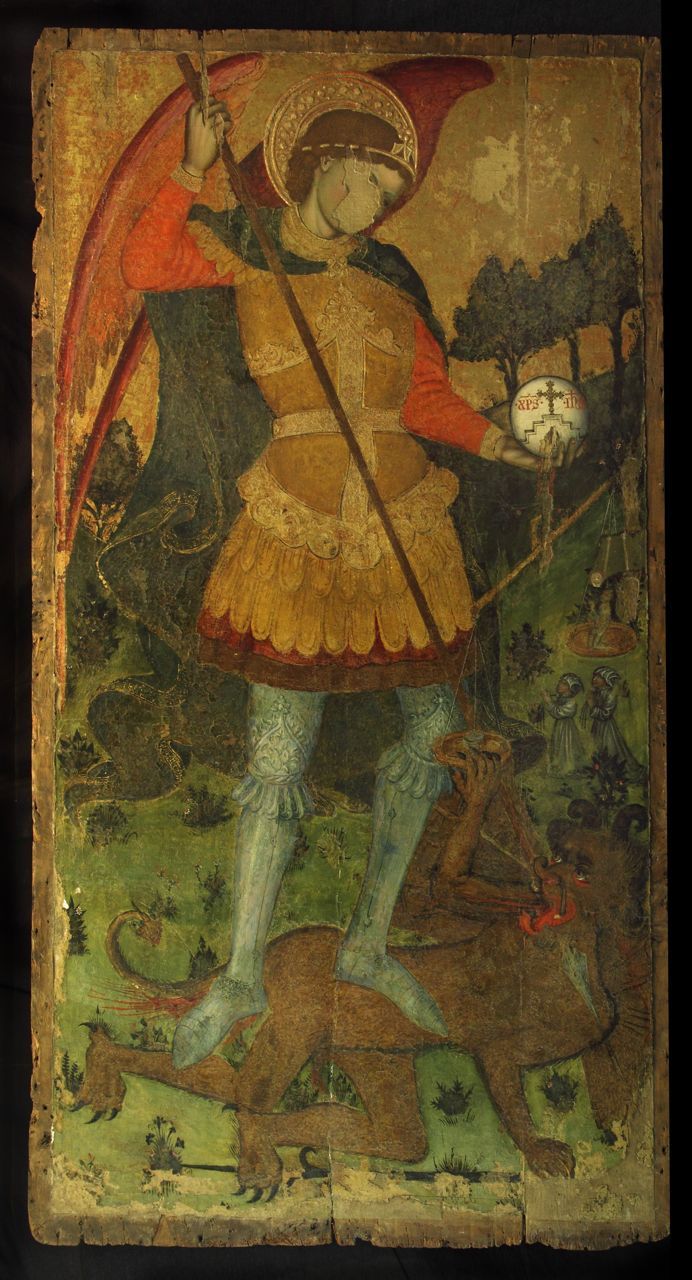
At first glance, coming across this painting in a museum, you might just think that due to its more than 500-year existence, a little paint had chipped off here and there. However, the damage to the saint’s face has actually been ascribed to historical vandalism. In the 16th century, Reggio suffered terribly from attacks by Ottoman Turks and Barbary pirates. These invaders defaced, literally, religious paintings and chopped the heads off of and otherwise damaged sculptures. Thus, Saint Michael the Archangel suffered from this collateral damage.
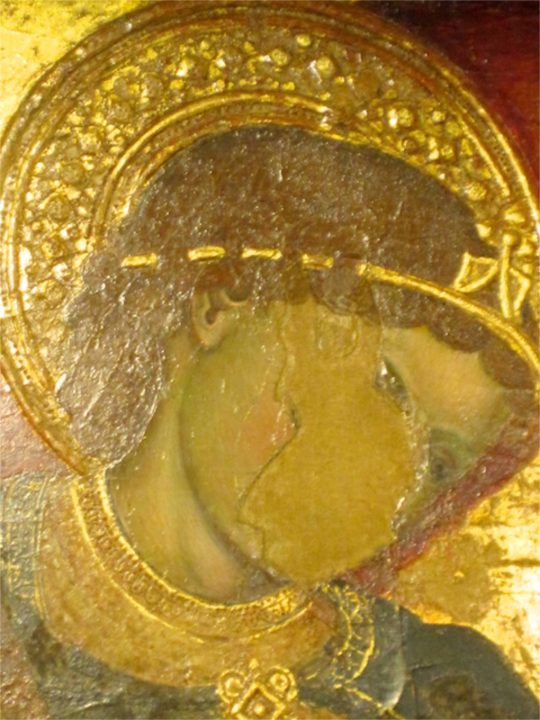
Today, these events might seem like ancient history. However, their memory is still very much alive in the common saying in the local dialect:
Simu cumbinati comu i santi 'i Rriggiu
Follow us on Instagram, @calabria_mediterranea
#reggio calabria#calabria#italy#italia#south italy#southern italy#proverbs#saint michael#15th century paintings#15th century#art#paintings#sacred art#15th century art#1470#15th century painting#archangel michael#mediterranean#history#langblr#italian#dialect#europe#art history#turks#ottomans#muslim#ottoman empire#museum
25 notes
·
View notes
Text
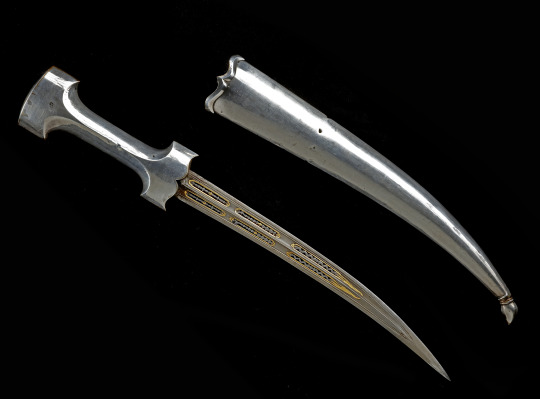

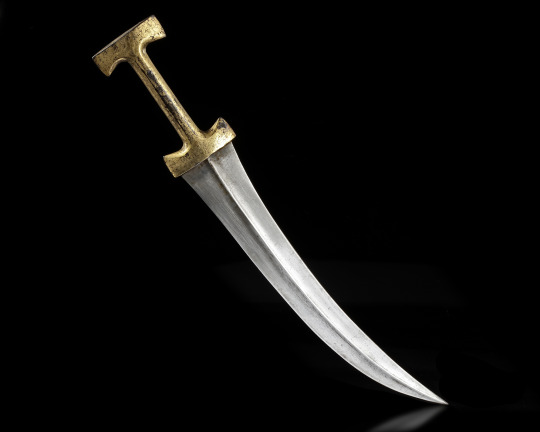

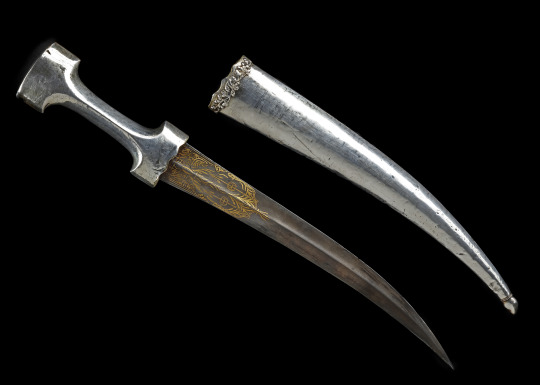

Ottoman daggers, 19th century
AN OTTOMAN SILVER DAGGER, (HANCER) TURKEY, 19TH CENTURY. Plain silver hilt with scalloped shoulder, with openwork to the blade, decorated in gold overlay. The plain silver scabbard marked with the tughra of Mahmud II 1223-55 AH/1808-39 AD. Length: 51 cm.
AN OTTOMAN DAGGER WITH TOMBAK HILT AND SCABBARD, TURKEY, 19TH CENTURY. The slightly edged double-edged watered steel blade with a raised central spine, the tombak waisted hilt of typical form engraved with leafy sprays and inscriptions ' Amal Ammar, work of Ammar'. The scabbard with tomabk chape and locket. Length: 47 cm. Width: 7 cm.
AN OTTOMAN SILVER DAGGER, (HANCER) TURKEY, 19TH CENTURY. Plain silver hilt with scalloped shoulder, the slightly curved blade with gold damascening decoration at forte. The plain silver scabbard with a grape-bearing vine frieze mount, marked with the tughra of Mahmud II 1223-55 AH/1808-39 AD. Lenght: 50 cm.
tinyurl.com/yh9fkh87
101 notes
·
View notes
Photo

~ Brown and White ~
43 notes
·
View notes
Text
Few ancient sites are as iconic as the Acropolis in Athens but sadly not everyone can visit in person. This BBC's 360° tour, however, is the next best thing.
34 notes
·
View notes
Text
Pictured are Ottoman soldiers with the Ottoman standard of Gazzah, given to the 79th Infantry Regiment which defended Gazzah, Ottoman Falasteen in the First Battle of Gazzah during World War I, c. 1917 CE (1335/1336 AH)
The First Battle of Gazzah took place on March 26, 1917 CE (2/3 Jumada al-Thani, 1335 AH).
The Ottomans successfully defended the city on this occasion and again in April 1917 CE (Jumada al-Thani 1335 AH) at the Second Battle of Gazzah, but thereafter lost the Third Battle of Gazzah in November 1917 CE (Muharram 1336 AH).
By December 1917 CE (Safar 1336 AH), the Ottomans then lost Al Quds (Jerusalem) ending their 400 year old rule (1517-1917 CE) of modern-day Falasteen and their custodianship over Bayt al-Maqdis (Al Aqsa).

#islam#muslim#history#islamic history#history blog#gaza#free gaza#gaza strip#palestine#falasteen#falastin#world war 1#ottoman history#ottomans#ottoman#osmanli#masjid al aqsa#al aqsa mosque#al quds
17 notes
·
View notes
Text
what I'm saying is, I'm really more of a Cem Sultan than a Bayazid II. I'd make an excellent Cem.
6 notes
·
View notes
Photo

A Collection of Beautiful Blue Serene Living Rooms That Wow
#windows#blue#living rooms#patterns#interior decorating#seating#sofas#couches#ottomans#curtains#drapes#throw pillows
72 notes
·
View notes
Text

لا تحسب كل شخص مرهماً وتطبقه على جراحك..!
ستلتقط الجراثيم...
Don't think of every person as ointment and apply it to your wounds..!
You will catch germs...
#ottomans#ottoman#ottoman empire#osmanlı imparatorluğu#osmanlıca#türkiye#doğa#travel photography#travel destinations#travel#manzara#view#natural#europe#africa#Spotify
47 notes
·
View notes
Text
The real life Dracula AKA Vlad The Impaler
many people know the story of Dracula. The first vampire, who lured people to his castle just so he could use his large to canines to suck the blood of the innocent, but what people might not know is the story is based on a real person who was much worse.
Vlad Dracula III, or Vlad the Impaler, was ruler of Wallachia in Romania during the mid 1400s and was known from what his name suggests, impaling people. When Vlad was young he was imprisoned by the ottoman empire, the ottomans had the intention of using the young Vlad as a bargaining chip to secure his fathers loyalty to the ottomans but this plan backfired when Vlads dad was ousted and executed by the local warlords in his region.
Vlad was freed from captivity shortly after his fathers death but not before the ottomans had taught him science, philosophy and how to be a great warrior. Vlad returned to his homeland and was shortly after tasked with defending it from the very ottomans that had imprisoned him previously. He successfully defended the area but he was still not the ruler of Wallachia. There was a number of feuding boyars and so Vlad invited hundreds of them to a great banquet. once the banquet was in full swing he had them all stabbed and impaled on large poles so that his claim to the land would not be questioned. So began the reign of terror of Vlad the Impaler.
There are a great number of stories of Vlads impalement's and brutal reign. like the story of the diplomats who refused to remove their hats citing religious reasons. impressed by their commitment to their faith Vlad had their hats nailed to their heads. Once when the ottoman armies approached the border of Vlads empire they were greeted with the site of an entire city impaled on spikes in the ground, some estimate 20,000 men, women and children, all for the purpose of scaring away his enemies.
He was an evil torturous ruler who spent his entire life being one of the most brutal men in history. Vlad met his end in a well deserved beheading when he and a small group of soldiers where ambushed. His head was delivered to Mehmed II in Constantinople and displayed on a spike above the city gates so that all would know that the evil reign of Vlad the Impaler had come to an end.
#history#ruler#evil men#european history#vlad the impaler#ottomans#ottoman history#bulgaria#europe#eastern europe#medieval
14 notes
·
View notes
Text

The Last Stand of Emperor Constantine XI in the Fall of Constantinople
by Christa Hook
#constantine xi#emperor#constantinople#art#fall#siege#history#europe#european#christianity#christian#byzantine#byzantines#byzantium#roman#romans#eastern roman empire#ottoman empire#ottoman#ottomans#turks#armour#sword#fall of constantinople#roman empire#greek#greece#mediterranean#constantine XI dragases palaiologos#christa hook
40 notes
·
View notes
Photo

The Ottomans' final assault on the walls of Constantinople, as painted by Jose Daniel Cabrera Peña
Constantine XI Palaiologos
#art#Ottomans#Byzantine empire#Constantinople#Istanbul#Mehmed II#Constantine XI Palaiologos#military history#siege battle
27 notes
·
View notes